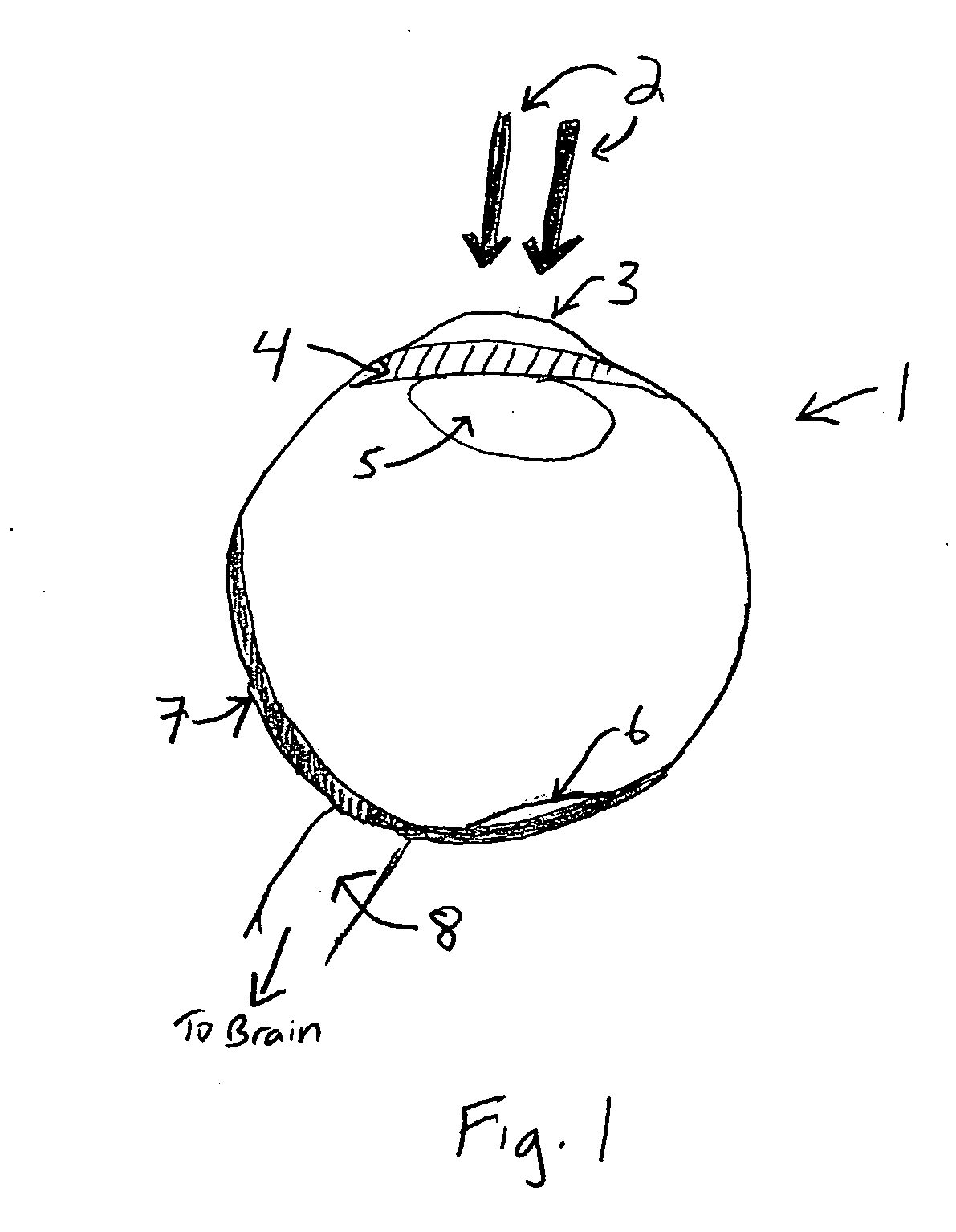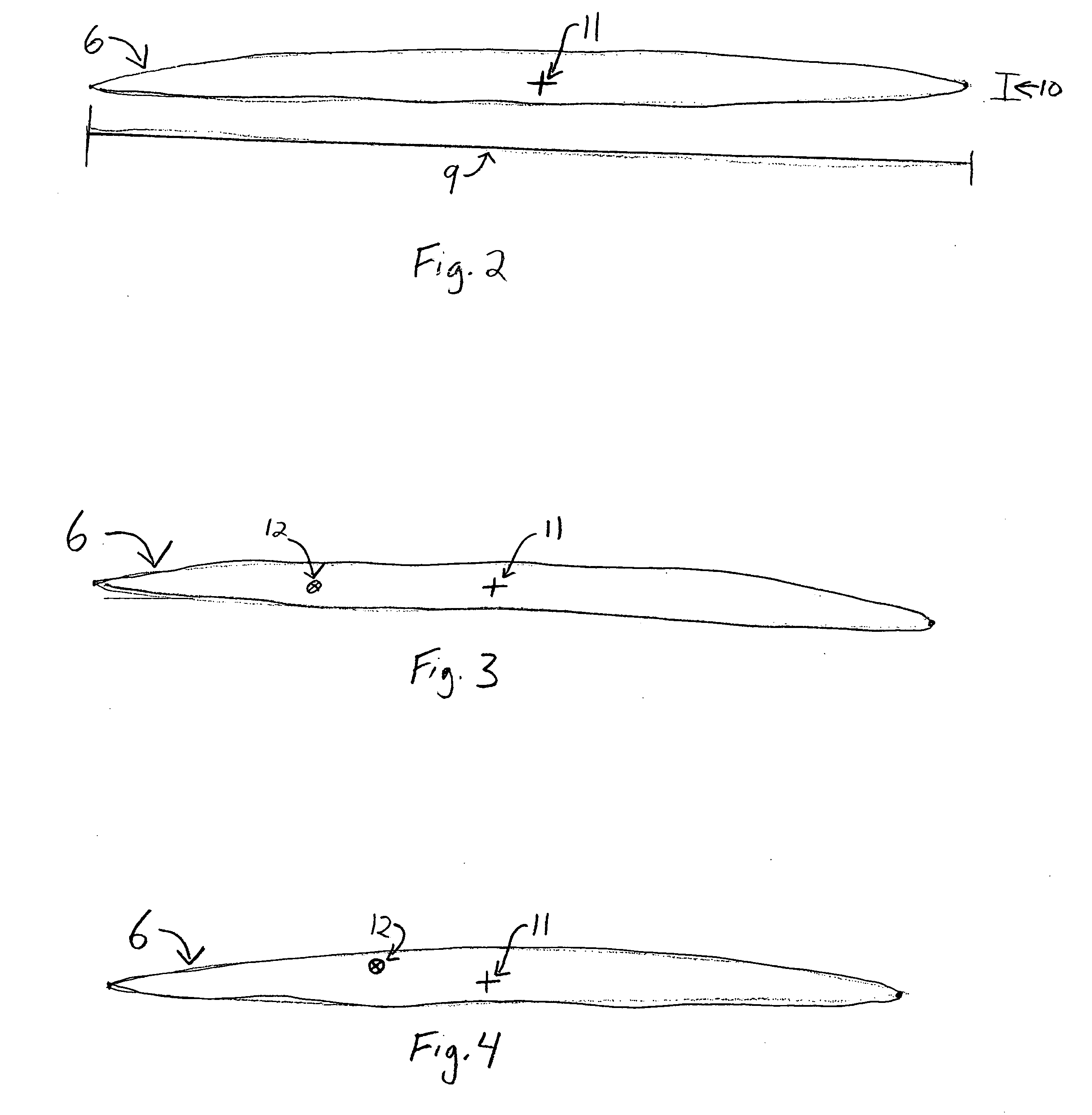Method for correcting vision problems
a visual acuity and eye problem technology, applied in the field of eye visual acuity correction, can solve the problems of macular degeneration, blindness and near blindness in older individuals, and the inability to direct light to a fully functional section of the fovea, etc., and achieve the effect of reducing vision problems
- Summary
- Abstract
- Description
- Claims
- Application Information
AI Technical Summary
Benefits of technology
Problems solved by technology
Method used
Image
Examples
Embodiment Construction
[0059]5 degree rotation: 0.087×230 μm=20.01 μm
[0060]10 degree rotation: 0.174×230 μm=40.02 μm
[0061]15 degree rotation: 0.258×230 μm=59.34 μm
[0062]20 degree rotation: 0.342×230 μm=78.66 μm
[0063]It should be noted that as any vertical image displacement increases, there will be a corresponding decrease in the horizontal image disparity upon the retina. Ultimately this prism combination, if pushed past Panum's fusional area, will produce diplopia.
[0064]Juxta-foveolar stimulation seeks to adjust the prisms over each eye, while retaining binocularity via retinal stimulation within Panum's Area. Thus, placing images upon a more healthy cone area of the retina—a sweet(er) spot. When binocularity is totally absent, then any salutary improvement in visual acuity has less potential improvement, and relies principally on oblique head-posturing.
[0065]These and other objects of the invention, as well as many of the intended advantages thereof, will become more readily apparent when reference is ...
PUM
| Property | Measurement | Unit |
|---|---|---|
| Strength | aaaaa | aaaaa |
| Hydrophilicity | aaaaa | aaaaa |
Abstract
Description
Claims
Application Information
 Login to View More
Login to View More - R&D
- Intellectual Property
- Life Sciences
- Materials
- Tech Scout
- Unparalleled Data Quality
- Higher Quality Content
- 60% Fewer Hallucinations
Browse by: Latest US Patents, China's latest patents, Technical Efficacy Thesaurus, Application Domain, Technology Topic, Popular Technical Reports.
© 2025 PatSnap. All rights reserved.Legal|Privacy policy|Modern Slavery Act Transparency Statement|Sitemap|About US| Contact US: help@patsnap.com



